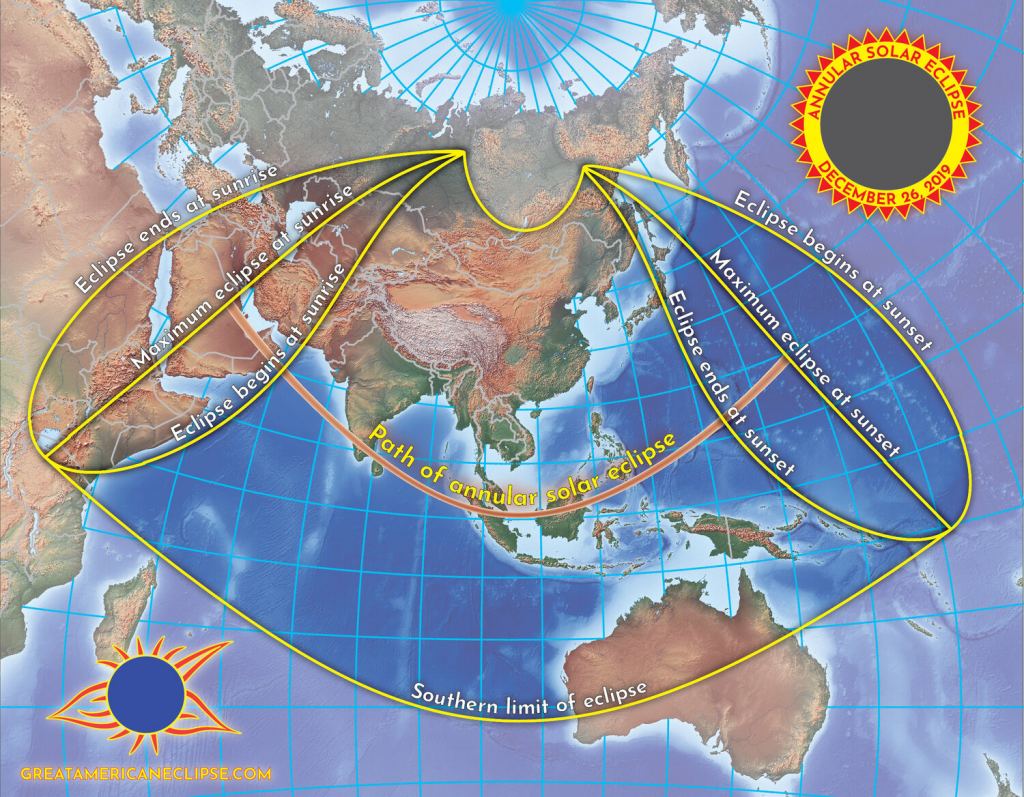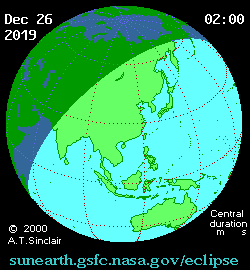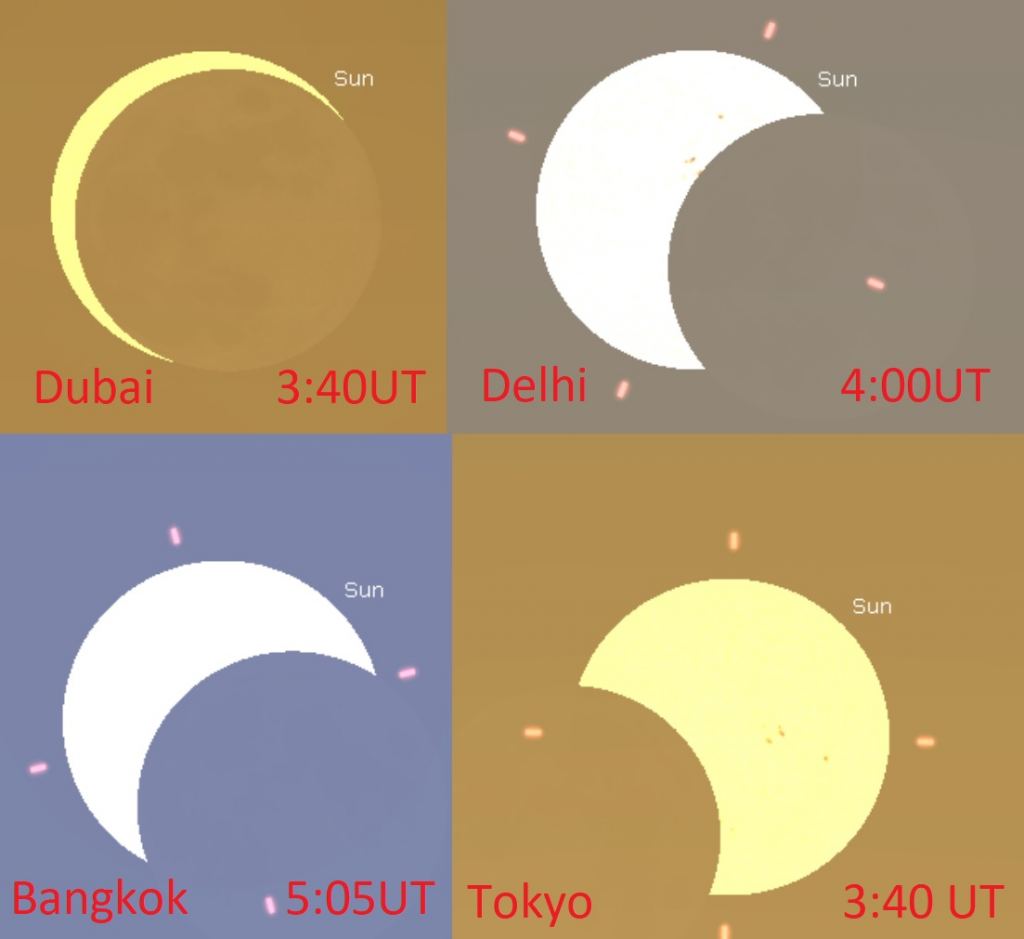Ready for the final ‘Ring of Fire’ solar eclipse of 2019? The final eclipse of the year kicks off this week on Wednesday, early on December 26th the day after Christmas, with an annular solar eclipse spanning the Indian Ocean region from the Middle East to the western Pacific.
An annular solar eclipse occurs when the Moon reaches New phase near apogee, its farthest point from the Earth. The Moon’s orbit is inclined about five degrees relative to the ecliptic, and eclipses—lunar and solar—always occur when one of those crossing nodes of the Moon’s orbit along the ecliptic falls near New and Full phase. The result is a Moon that’s visually too small to cover the disk of the Sun, resulting in a bright ‘annulus’ or ‘Ring of Fire’ eclipse. Lunar apogee occurs just one week after this week’s eclipse, on January 2nd.

This eclipse begins at sunrise over the Arabian peninsula, with the path of annularity touching the countries of Saudi Arabia, Qatar, United Arab Emirates, and Oman before crossing the Arabian Sea over to India and Sri Lanka. From there, the path crosses the Bay of Bengal to southeast Asia, crossing Indonesia, Malaysia and Singapore, before ending at sunset over the U.S. territory of Guam.
Maxim length for annularity of 3 minutes and 40 seconds occurs over peninsular Malaysia at 5:17 Universal Time (UT). The path width for the annular eclipse is about 118 kilometers wide, and the antumbral shadow of the Moon will take 3 hours and 26 minutes to cross the face of the Earth from 3:34 to 7:00 UT.

Regions from southern Siberia to Horn of Africa to northwestern Australia up through Japan and northeastern Asia will see varying stages of a partial solar eclipse. Fun fact: it’s well known that the Moon is slowly receding from the Earth, and in about 600 million years, total solar eclipses will no longer occur. But in the current epoch, annular eclipses are already slightly more common than total solar eclipses.

Viewing Prospects
Fortunately, when it comes to observing solar eclipses, you don’t need a crystal clear blue sky… just a good view of the Sun. December is also the start of the dry season along southern Asia, opposite to the summer monsoons. On average, regions towards the eastern end of the Indian Ocean have a better shot at clear skies. Areas along the Arabian peninsula will also see the eclipse at sunrise, a very photogenic opportunity to nab the ‘ring of fire’ along with foreground objects. Likewise, viewers based in Guam will get a similar opportunity at sunset. Sunspot activity is also at an historic lull in 2019, so it’s most likely the Sun will appear blank come eclipse day.
Really, an annular eclipse is just a special type of partial eclipse, and you need to use proper safety precautions to observe the Sun throughout all stages of the eclipse: a few percent of the Sun is still very bright, enough to cause eye damage. Use approved safety glasses, and only use a solar filter on a telescope that’s meant to look at the Sun, one that fits snugly on the front of the telescope. You can also take an extra pair of eclipse glasses and a tea box and make a safe solar filter for a pair of binoculars:
Pinhole projection is also a safe and easy way to observe a solar eclipse. Also, natural pinhole projectors can occur via lattice work or gaps in tree leaves, casting hundreds of little solar crescents back onto the ground or sidewalk. Never leave a telescope unattended during solar observing, and always inspect a solar filter before use by holding it up to the Sun, and assuring its integrity is intact. Also, if you’re projecting the Sun through optics, be sure to let them cool down occasionally – optics can easily overheat during a solar projection session, scorching coatings, melting plastic parts, and causing elements to come unglued, all very bad things that can damage an expensive telescope.
Thus far, we’ve come across one live webcast for the December 26th eclipse, out of India:
This also marks the start of eclipse season spanning into January 2020, which ends with a penumbral lunar eclipse on January 10th avoring Europe, Africa, Asia and Australia. There are two solar eclipses in 2020, including another annular crossing Africa, southeast Asia and China, June 21st, and a total solar eclipse crossing the southern tip of South America on December 14th.
Good luck clear skies, and enjoy the last ‘Ring of Fire’ solar eclipse (either live or online) for 2019.
Lead image credit and copyright: Kevin Baird.


Just a bit too far north for me.
By the way, the live stream was from Sri Lanka which is not in India.
Thanks!